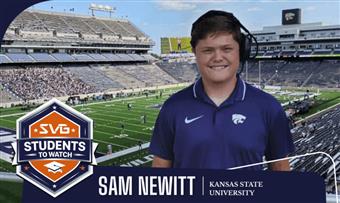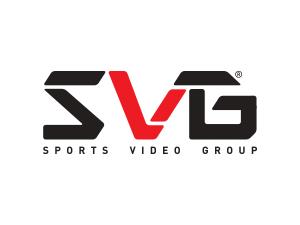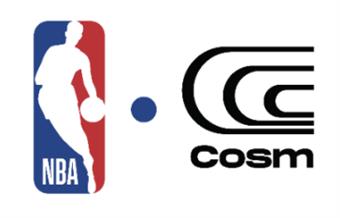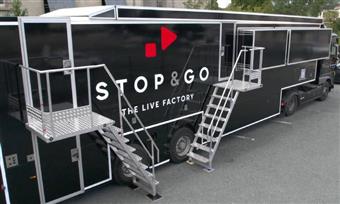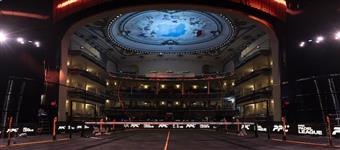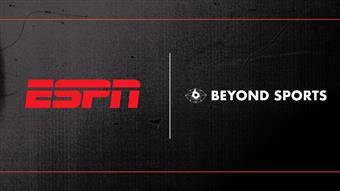 Live on the Water: The Rowing Channel Pulls Off Historic Production at Head Of The Charles RegattaDolby OptiView is deployed for live coverage of the three-day boat raceBy Jason Dachman, Editorial Director, U.S.
Live on the Water: The Rowing Channel Pulls Off Historic Production at Head Of The Charles RegattaDolby OptiView is deployed for live coverage of the three-day boat raceBy Jason Dachman, Editorial Director, U.S. Monday, November 3, 2025 - 2:16 pm
Print This Story | Subscribe
Story Highlights
When it comes to rowing, it simply doesn't get any bigger than the Head Of The Charles Regatta. With 11,000 athletes rowing in more than 2,500 boats in 73 events, the world's largest three-day regatta presents a unique live-production challenge each year for The Rowing Channel (a Watersports Broadcasting Corp. brand). This year, TRC not only deployed its largest production to date but also provided viewers with a brand-new way to view the action on Massachusetts's Charles River via Dolby OptiView technology.
With 11,000 athletes rowing in more than 2,500 boats in 73 events, the Head Of The Charles is the world's largest three-day regatta
I've been to all the biggest races, and I can tell you from experience that you're not going see this level of coverage on the water almost anywhere else, says Brandin Grams, principal engineer, Netrendity Networks, who has been the driving force of The Rowing Channel since its inception in 2014. There's just no other event like this, especially for a head race, and it's up to us to bring that same level to our productions.
To provide a more comprehensive and interactive experience for this year's race (which took place Oct. 17-19), The Rowing Channel partnered with Dolby OptiView to debut a new multiview experience on TRC.live. In a first for live rowing coverage, viewers could build their own viewing setup featuring live video streams from prominent checkpoints on the Charles River. Viewers can watch up to six feeds at once - all delivered in under five seconds from camera to screen.
Coverage of the regatta is produced from the former WBPX broadcast facility on Harvard's athletics campus.
There's simply nothing like the Head Of The Charles, said Watersports Broadcasting CTO Sev de Neergaard prior to the race. It's special and singular in the sport of rowing. At the same time, head races can often be very boring to watch simply because of the nature of the competition. But giving you more views, more interaction, and the ability to find the athlete you want to follow, we think, is going to make head races more exciting.
Inside the Production: Six Sites, Four REMI WorkflowsThis year, TRC grew its coverage to four REMI workflows spanning six unique sites along the Charles River, each with its own dedicated feed captured through an SRT-backed network. That's up from four locations along the river for last year's coverage.
TRC grew its coverage to four REMI workflows spanning six unique sites along the Charles River
The sites included the Cambridge Boat Club at the Eliot Street Bridge, the Harvard Weld Boathouse, and the Riverside Boat Club. Livestreams were also available from the HOCR Finish Line at Herter Park, the HOCR Start Line at Boston University's DeWolfe Boathouse, and the podium at the HOCR Awards Tent.
In terms of cameras, TRC deployed a DJI Mavic 4 Pro drone, eight Canon primary-coverage cameras, three AIDA POVs, a PTZOptics camera, and two Ubiquiti G5 Pro PoE units.
It's a 3 -mile course. A lot can happen in 3 miles when you're staggering boats every five seconds to start, said de Neergaard. The Head Of The Charles is unique also because it has bridges. [Competitors] have to steer the boat when side by side with someone and determine who gets to go first through that bridge since it's not wide enough for both. That adds a lot of excitement, and we want to be able to capture those moments.
TRC's six locations are up from four locations along the river for last year's coverage.
Coverage of the regatta is produced from the former WBPX broadcast facility on Harvard's athletics campus. Grams and his production team developed an edge-to-cloud service, which is transmitted directly to the team at the WBPX studio when a direct broadcast connection isn't possible around the course. All footage is fed to the studio via a local wireless network that goes through Harvard Stadium and then to WBPX. The team also developed homegrown tally-light and communications systems through Android devices for camera operators and the rest of the crew.
One thing that's unique about the Head Of The Charles is, it has so many mixed streams going out telling a story overall instead of just [standalone camera] feeds, said de Neergaard. To do all that as a REMI [production] is complex, but we've been able to pull it off.
All footage is fed to the studio via a local wireless network that goes through Harvard Stadium and then to WBPX.
In all, TRC brought in 16 onsite crew members from around the country, as well as three reporters from rowing-content provider JRN, to produce a daily report show featuring the voices of elite athletes and notable figures of the rowing community. It all came together for three full days of covering every possible angle for fans watching at home or on LED displays onsite.
There would be no way to use a mobile unit for Head Of The Charles, notes Grams. I think that's unique to rowing. Our schedules are so tight that the cost of having the luxury [of a mobile unit] doesn't add up. Instead, we put everything in Pelican cases and ship them across the country; then we set it up in here, tear it down, and send it back. And we do it all over again the next time.
TRC's camera complement included eight Canon units for primary coverage.
The Multiview Experience: Dolby OptiView Revolutionizes How To Watch RowingUsing Dolby OptiView technology, TRC enabled viewers to watch all six live feeds simultaneously from start to fi




















